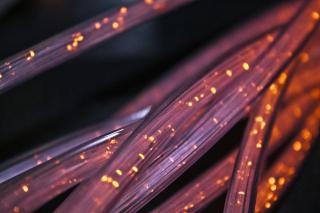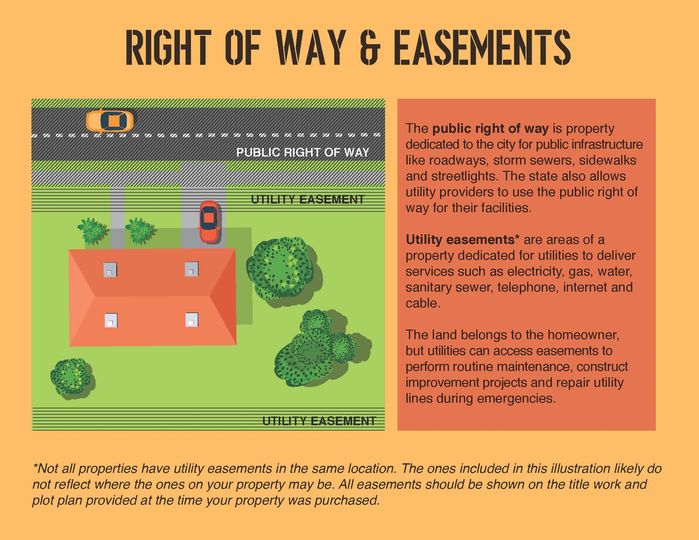Fiber Optic Construction in Bondurant

The City of Bondurant leaders approved right-of-way permits for the construction of a 100% fiber-optic network in Bondurant. Click here to track where they are in the construction process.
The telecommunication company, Mi-Fiber, has begun the construction of a network for high-speed fiber optic internet and phone service throughout the community.
Mi-Fiber presented its plan to the City Council earlier this year and is planning to bring “…the latest generation technology to provide unparalleled broadband experience to Bondurant and the Greater Des Moines area.” The company offers 100% fiber-optic connections directly to homes and businesses with speeds ranging from 100 Megabits to 1 Gigabit per second. The Company noted that their Internet connection is backed by a complete Fiber Optic network, meaning no coax and no copper. They indicated that by using a single fiber strand to each service location, symmetrical connection speeds up to one GIG can be achieved.
Mi-Fiber presented that their parent company has over 60 years of service history in the telecommunications industry in Iowa and Missouri. “Mi” in Mi-Fiber means Missouri-Iowa.
The Mi-Fiber deployment schedule in Bondurant will follow a phased approach in which service will sequentially develop across identified build sectors or “Fiber hoods”. Below is a link to the Mi-Fiber service area map. The process begins with surveying neighborhoods, working with the city on utility layouts and rights of way, and designing the network based on the latest generation fiber deployment techniques. You may see their staff and contracted engineers around town over several months as they work their way through designing the overall network. Before they can lay the fiber in the ground, or bring in construction equipment such as boring machines, they must figure out where the existing underground utilities are—wires, pipes, water lines, and so on. They then follow a precise process for marking the locations (“locates”) where each utility is supposed to be. This helps their construction crews when they are digging. You might see orange, blue, red, or yellow paint and flags on sidewalks, streets, or even on your grass. Those are locating marks of underground facilities.

Mi-Fiber’s construction permits, which are issued by a state or local government, allow them to build the fiber network in public rights-of-ways and easements. Where applicable, they have the right to construct on private property, such as in a multi-family apartment building, in a gated community, or across a private road. Most construction work is disruptive in some way or another, but city staff will work with Mi-Fiber to make every attempt to minimize disruption for our residents. Their goal is to maintain the integrity of every area where work is performed.
Utility work that affects traffic will be listed here: www.cityofbondurant.com/community/pages/upcoming-street-closures
https://mi-fiber.net/mi-fiber-service-area/
For any questions contact info@mi-fiber.net
FIBER FACT: Many rural areas and small towns already have fiber to every home and business! These areas are often served by independent, community-focused broadband companies. They realize that fiber optics is more reliable and capable of meeting their customers’ needs in the distant future.
STATE OF IOWA INTERNET AVAILABILITY FACTS: Iowa ranks as the 45th best-connected state in the USA. Despite relatively even broadband coverage throughout the state, speed tests reveal that Iowa’s average download speed is 78.9 Mbps.
In the case of Iowa, 89.7% of the population has access to a wired broadband connection with speeds of 25 Mbps or faster. However, 302,000 Iowans do not have a connection capable of such speeds, and another 100,000 residents do not have access to any wired connection at their location. Additionally, out of the 422 internet providers, 457,000 people in Iowa have access to only one wired provider at their residence, leaving them no options to change providers if the need arises.
Beyond that, affordability data shows that only 18.5% of the population has access to a low-priced internet plan (costing $60 or less per month). This is significantly lower than the national average of 51.5% of consumers with access to a low-priced plan.
CURRENT STUDIES: Greater Des Moines Partnership has hosted a Central Iowa Broadband Internet Survey, which is a comprehensive study of broadband internet usage and availability for 11 counties in the region. Working with broadband internet professionals and local leaders, the goal is to create a one-of-a-kind study that will provide decision-makers a detailed view of internet availability in the Central Iowa region.
Find the results here: https://www.dsmpartnership.com/growing-business-here-central-iowa-broadband-internet

